Full text
PDF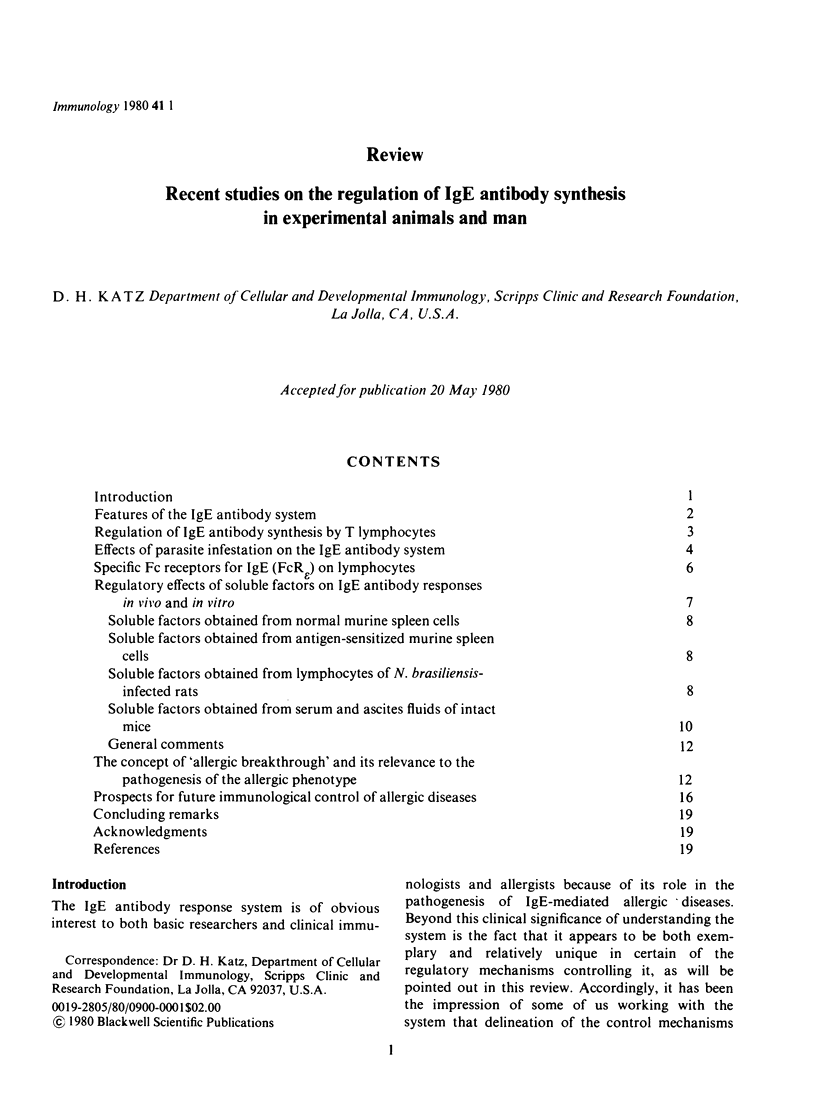
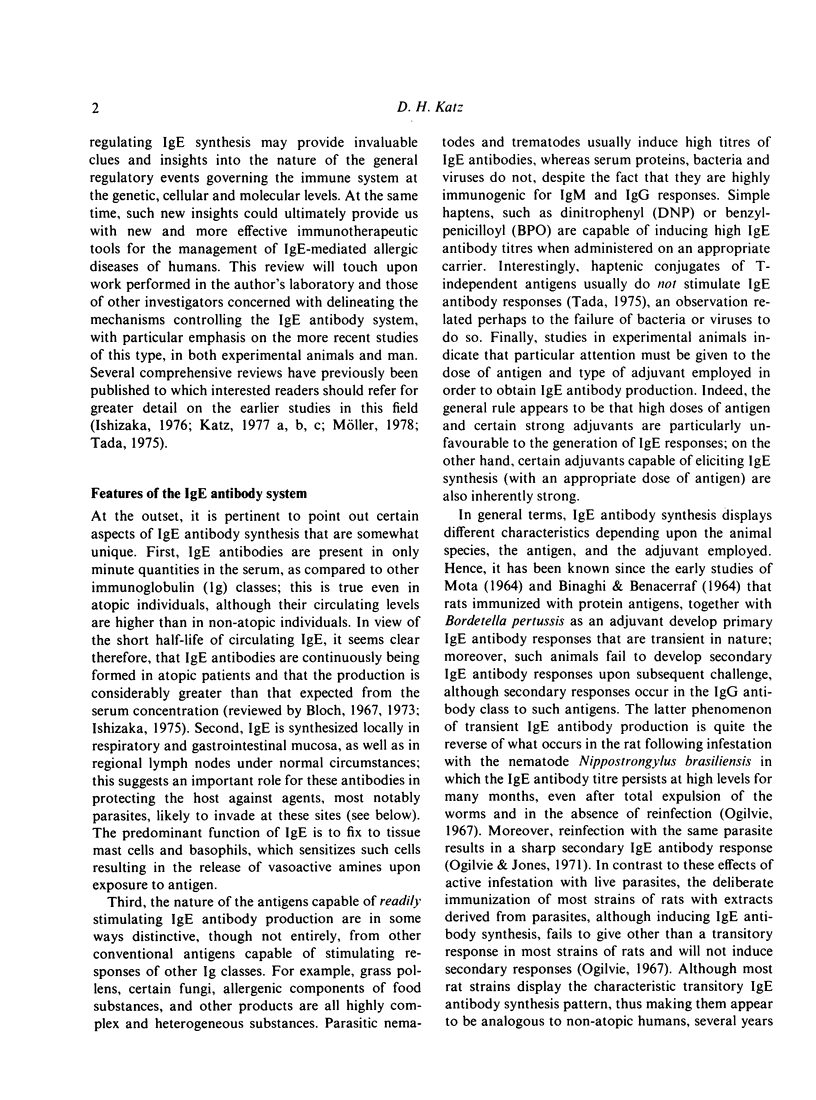
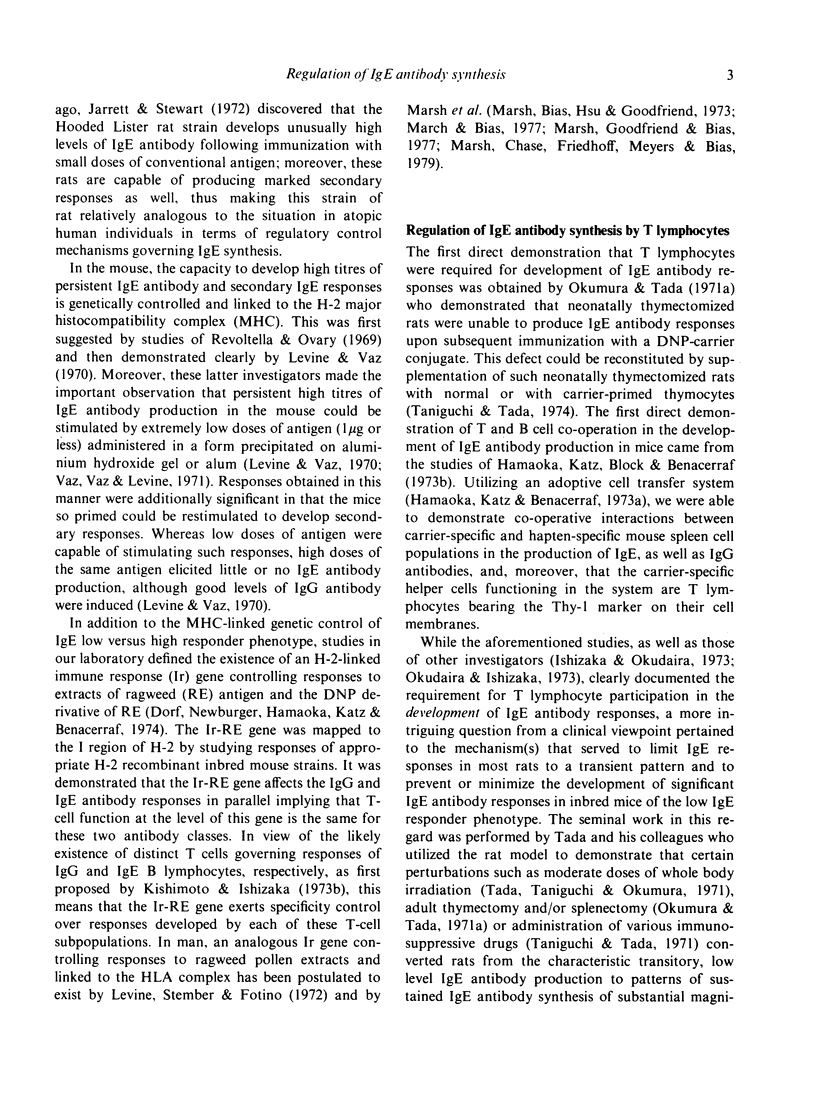
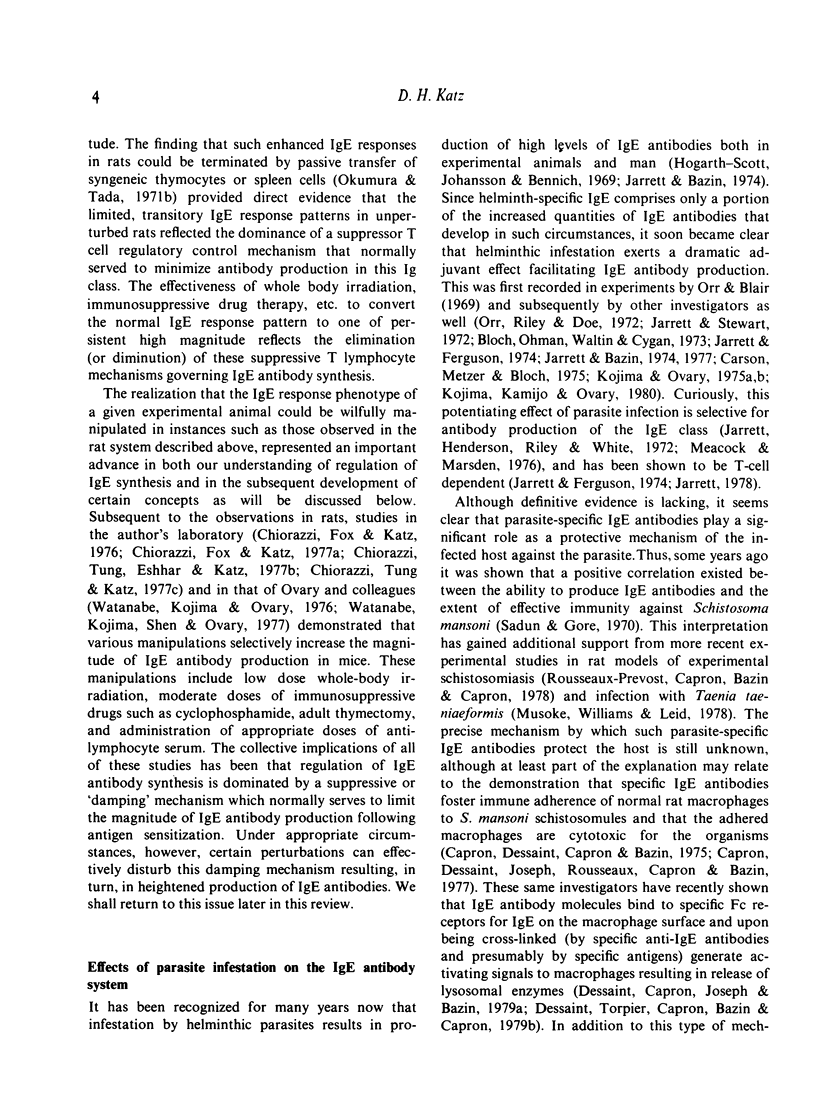
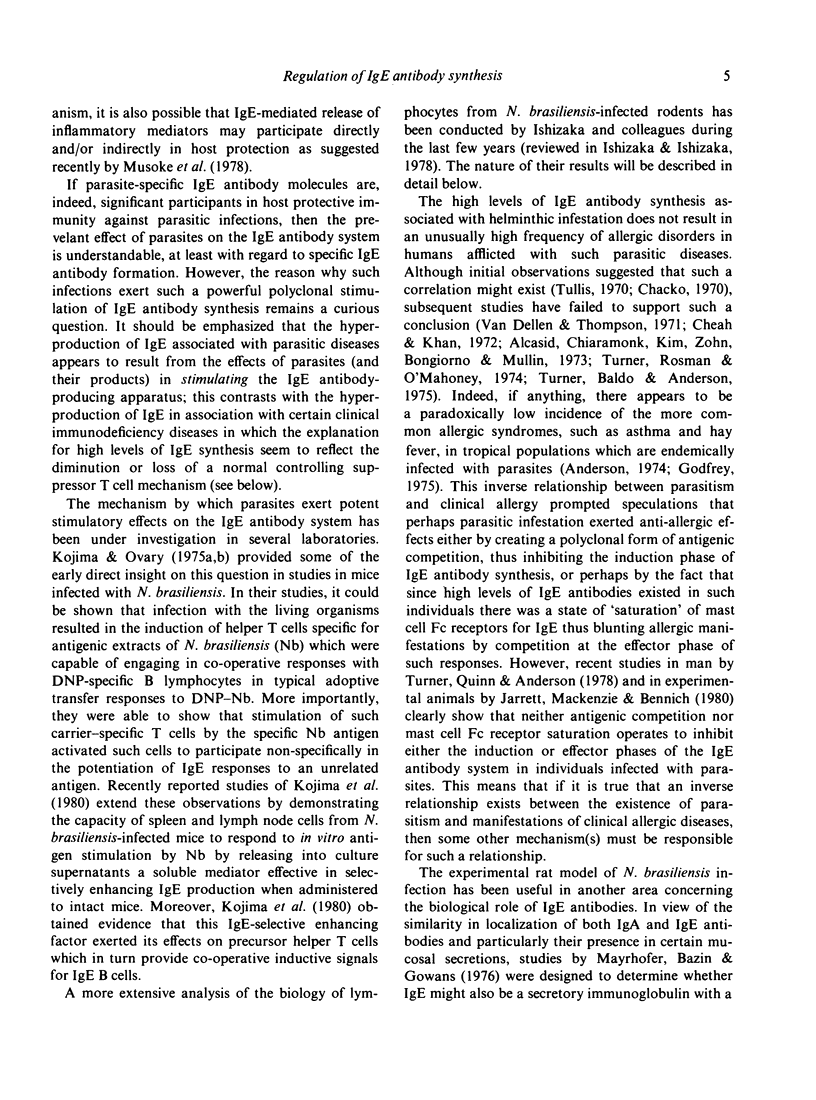
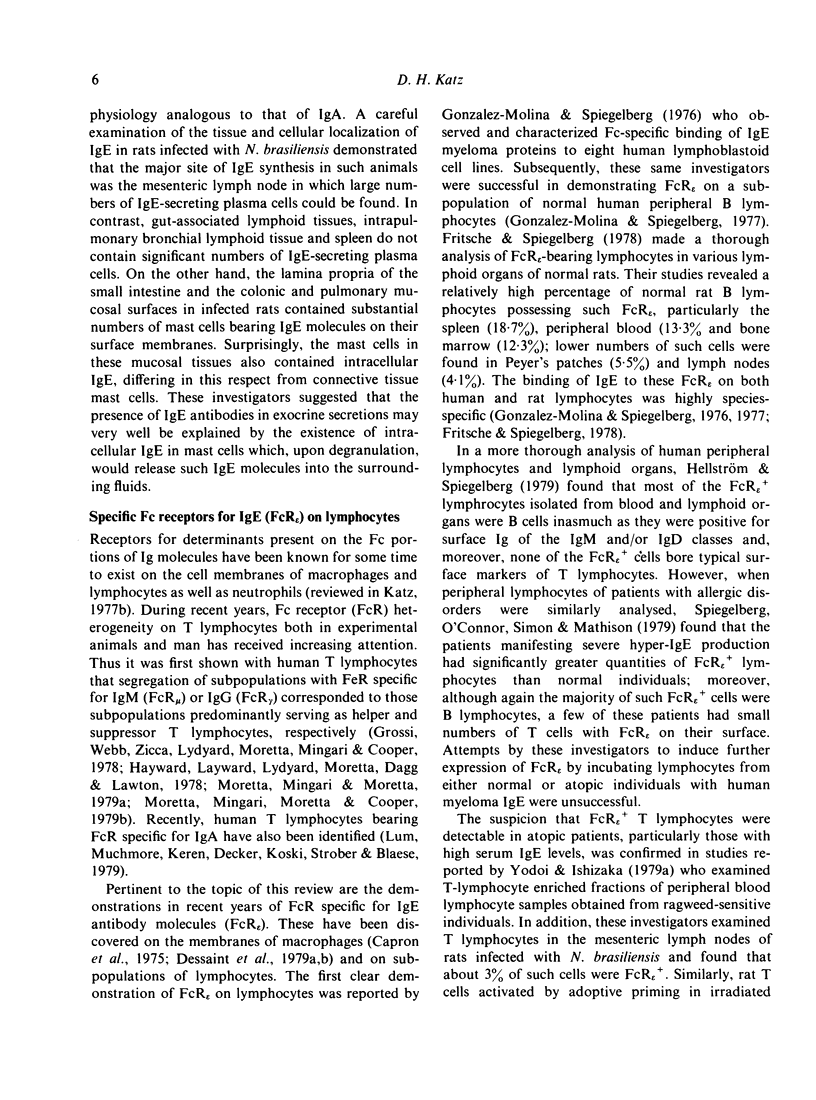
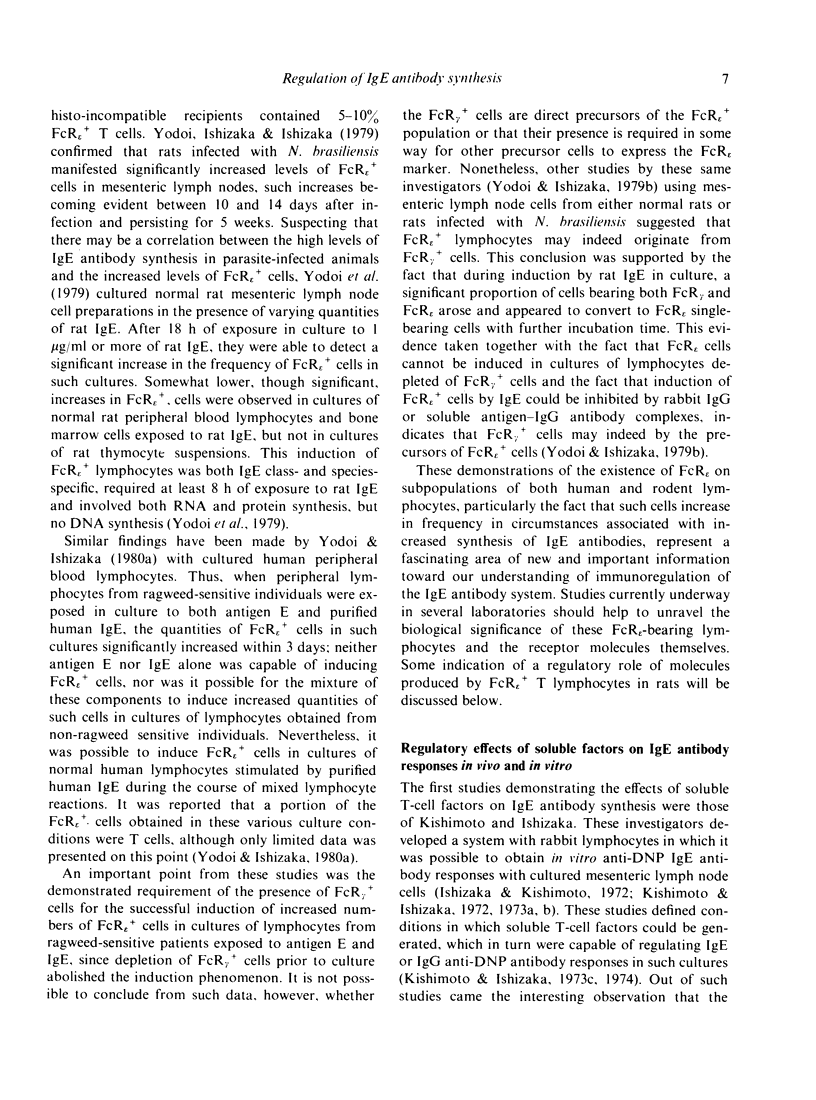
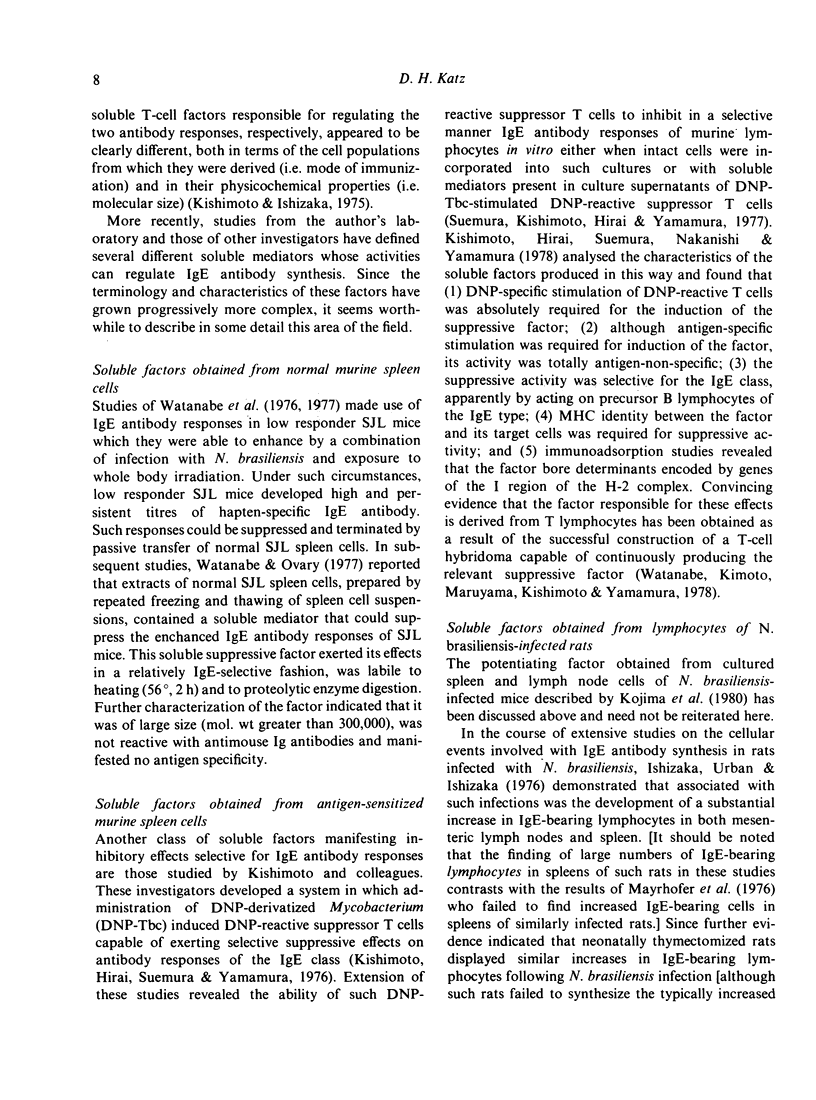
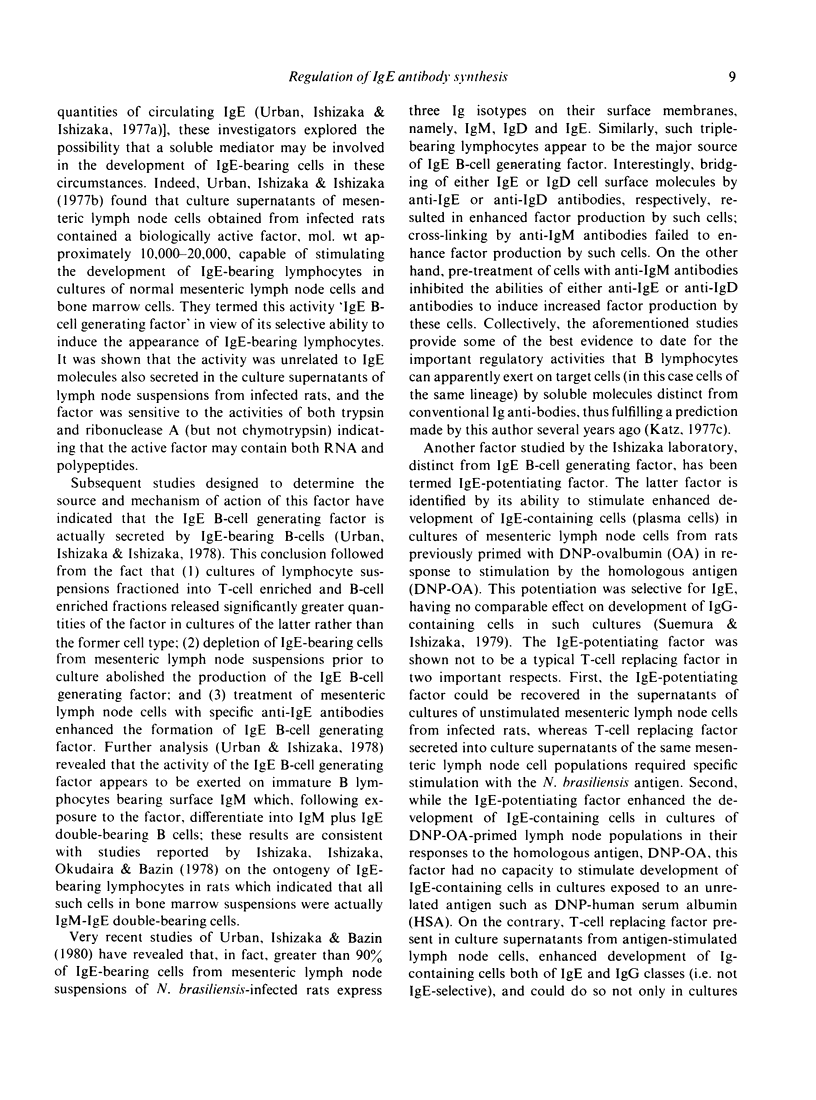
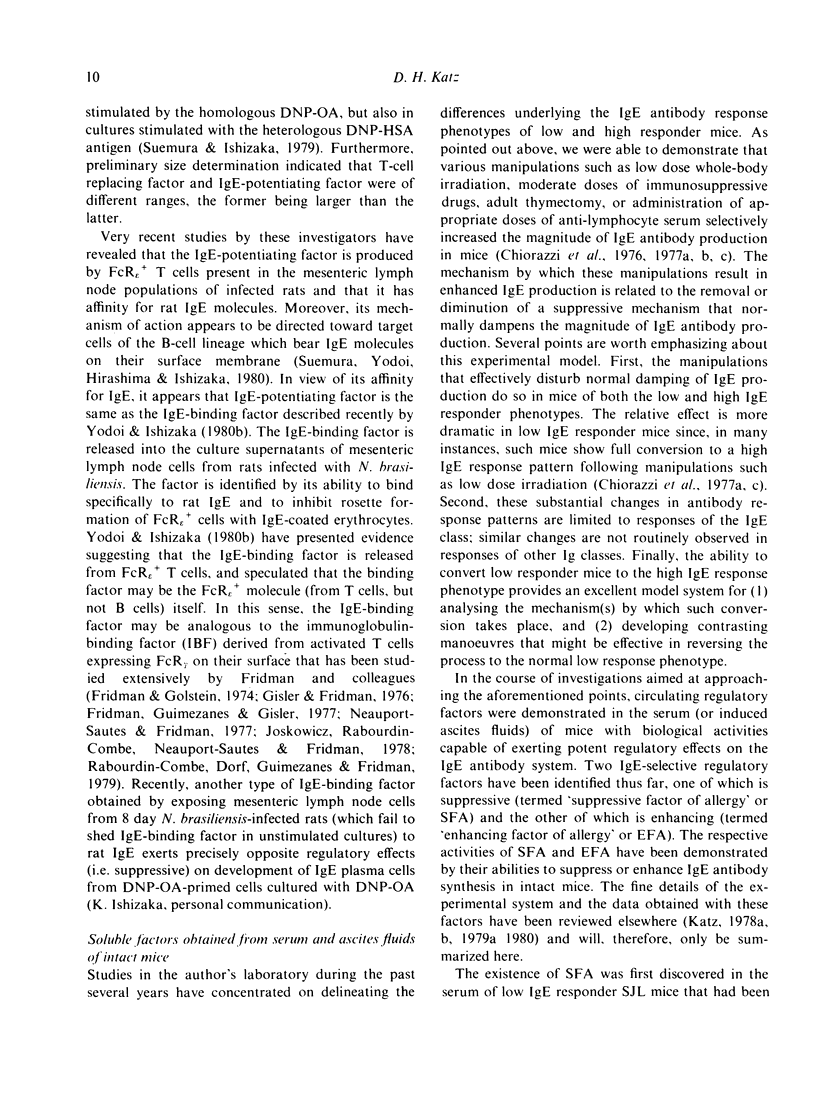
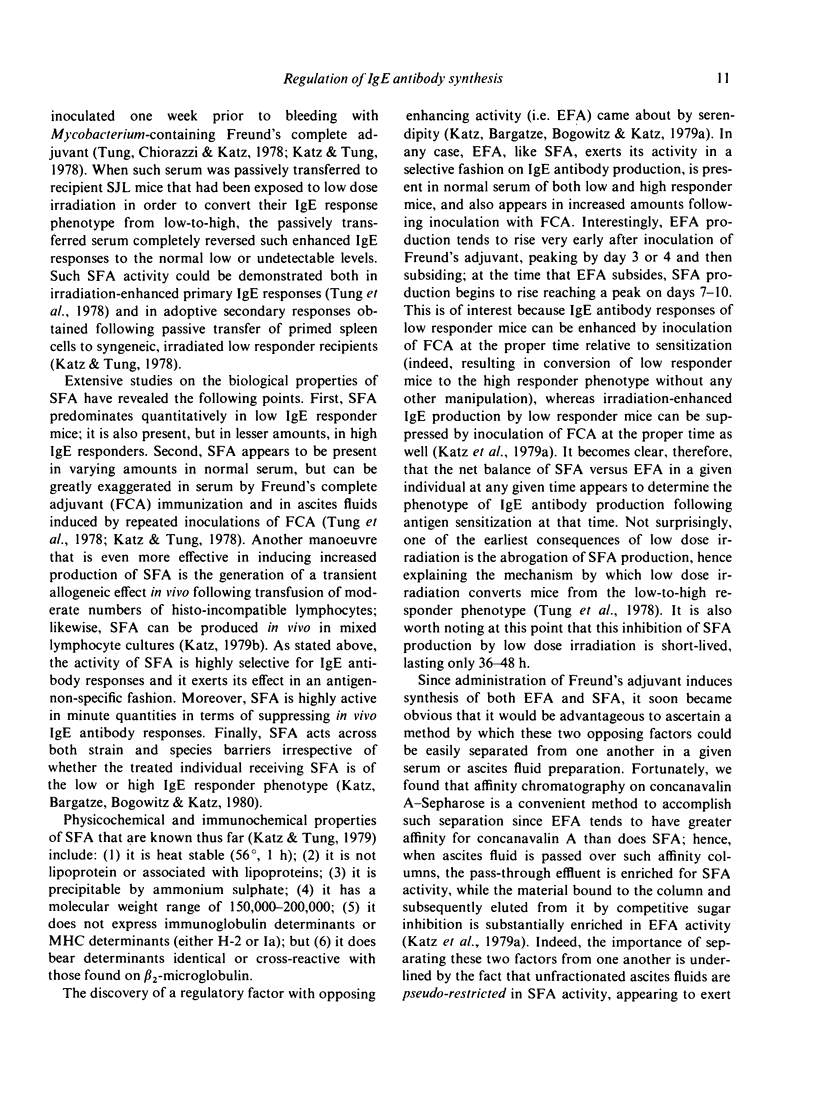
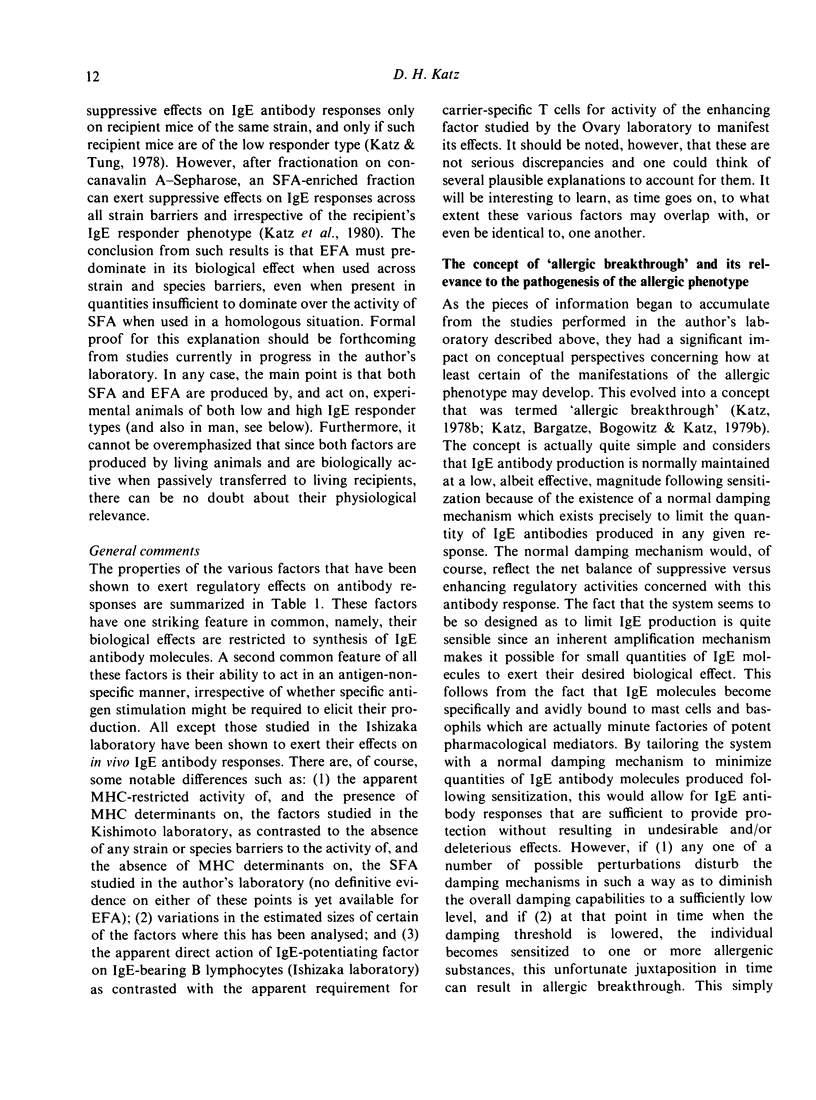
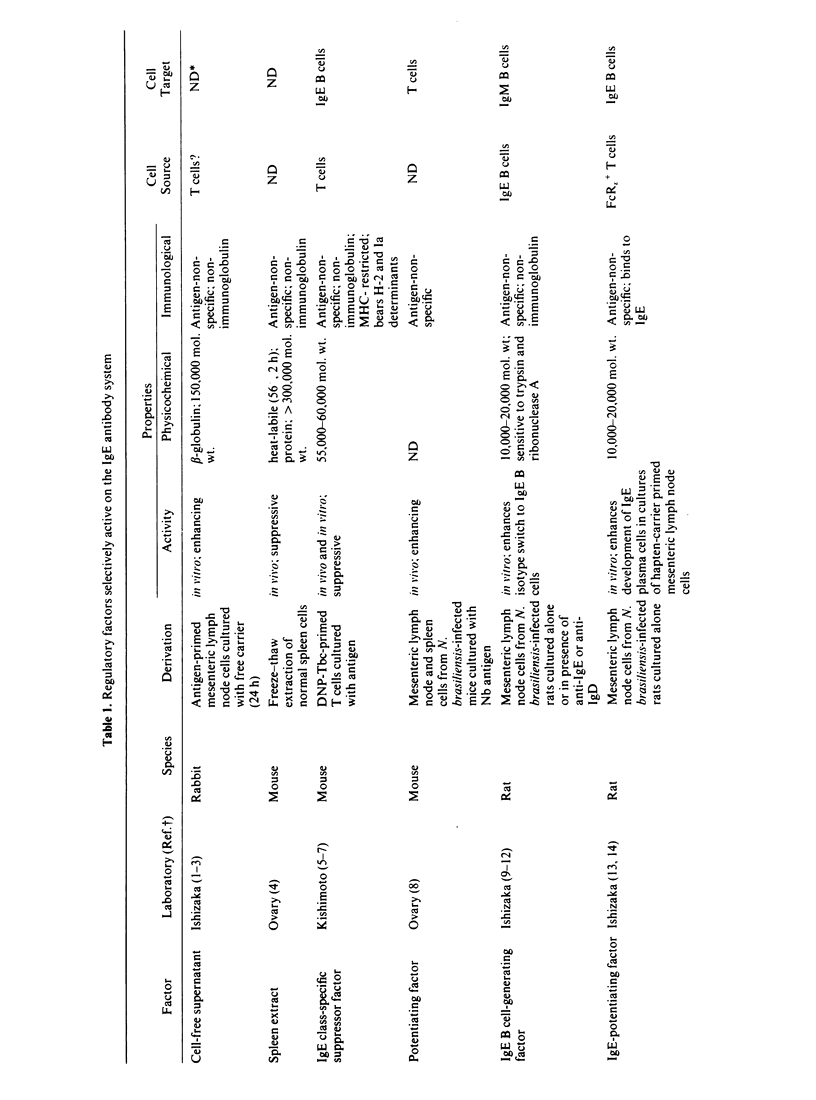
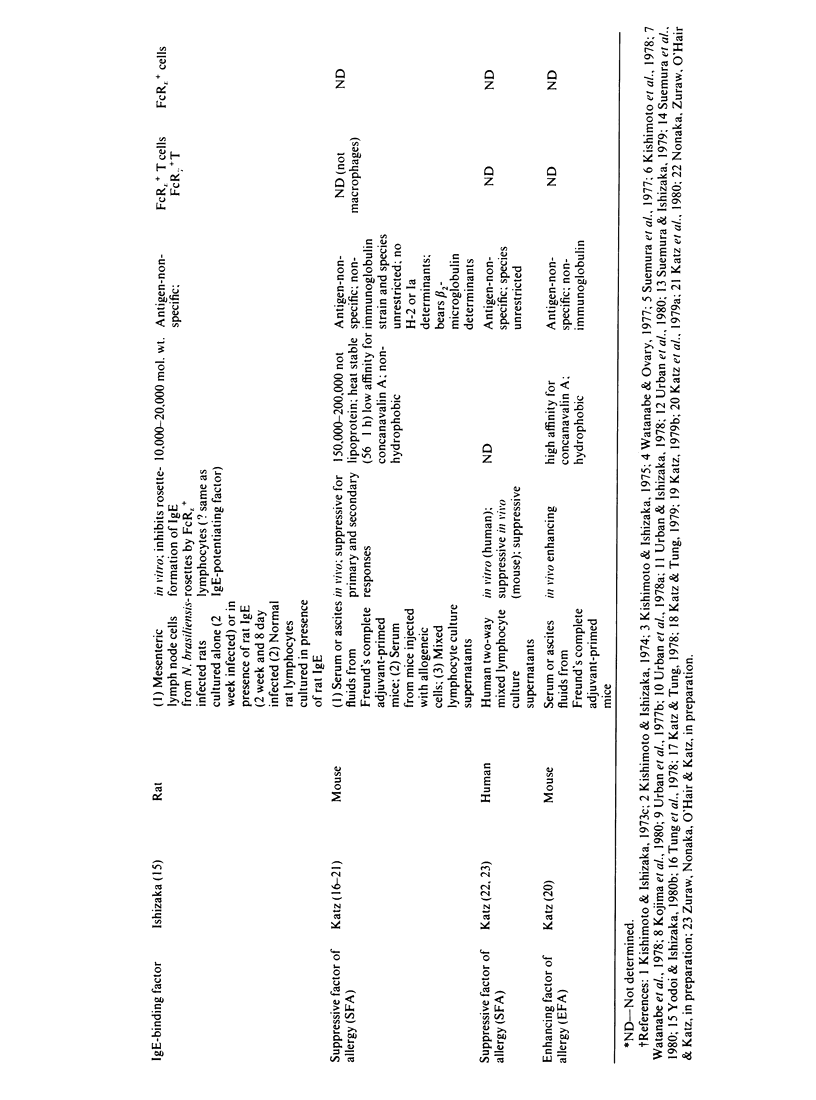
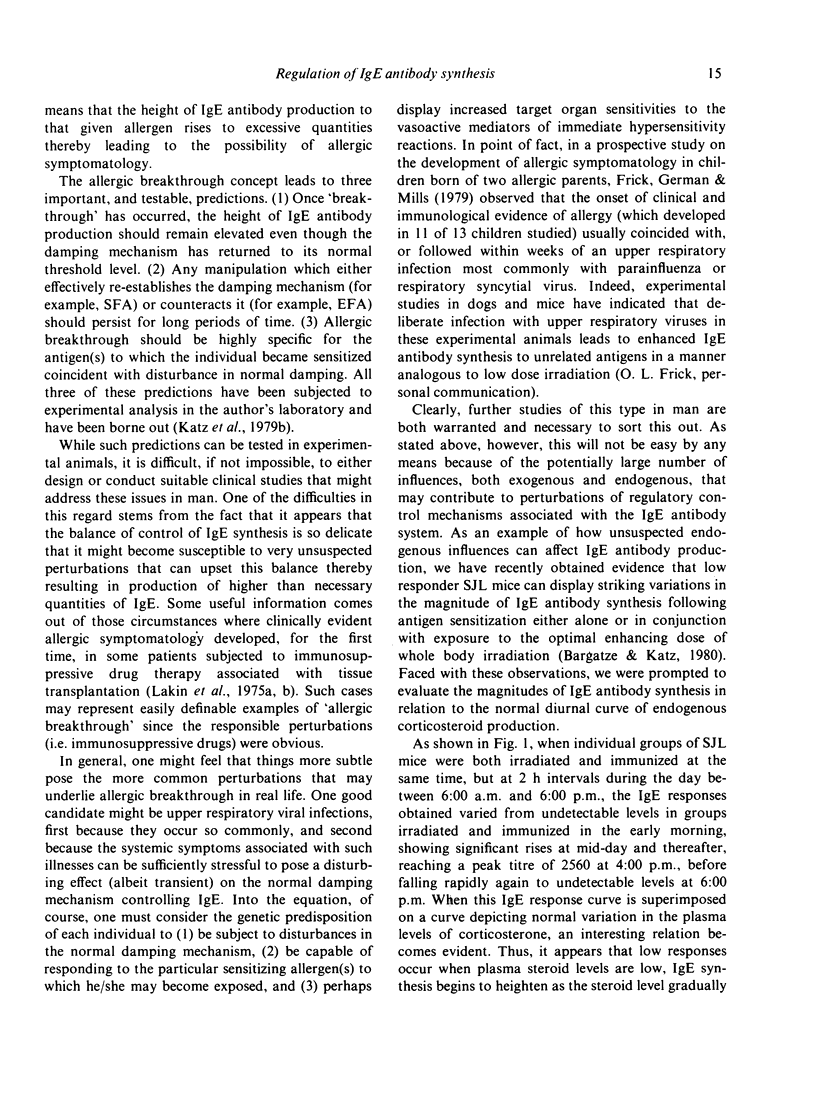
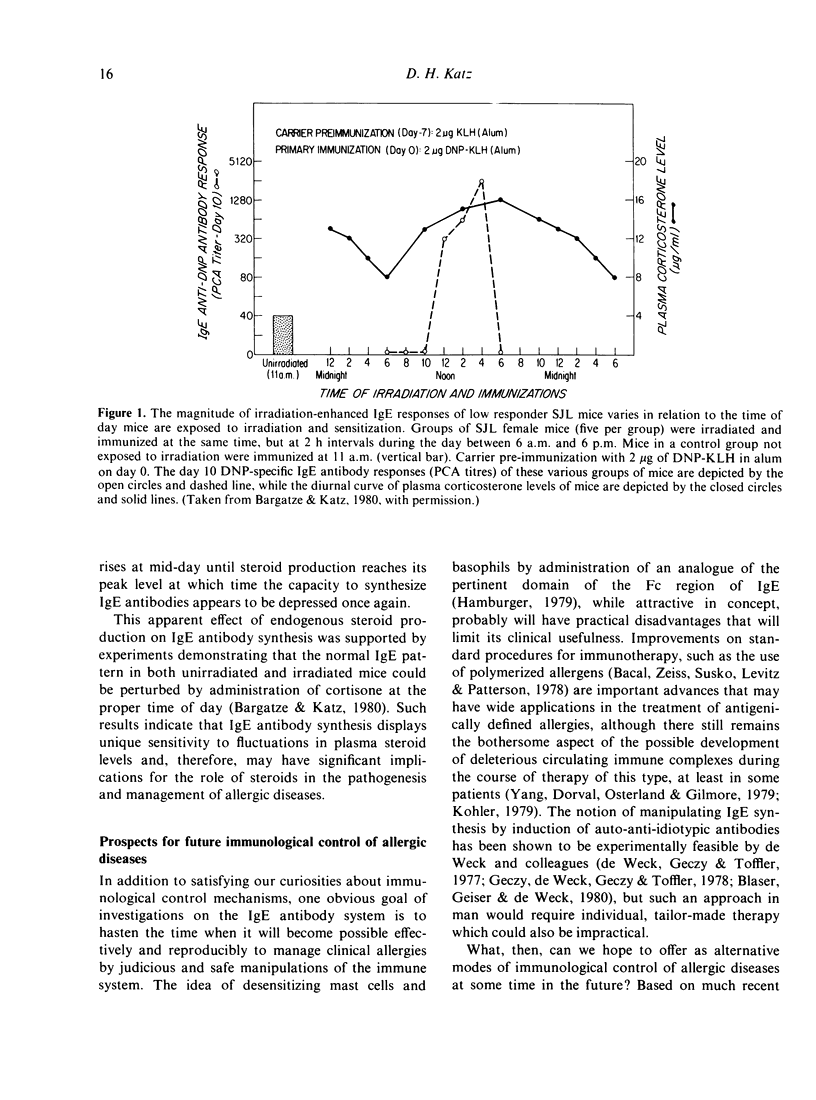
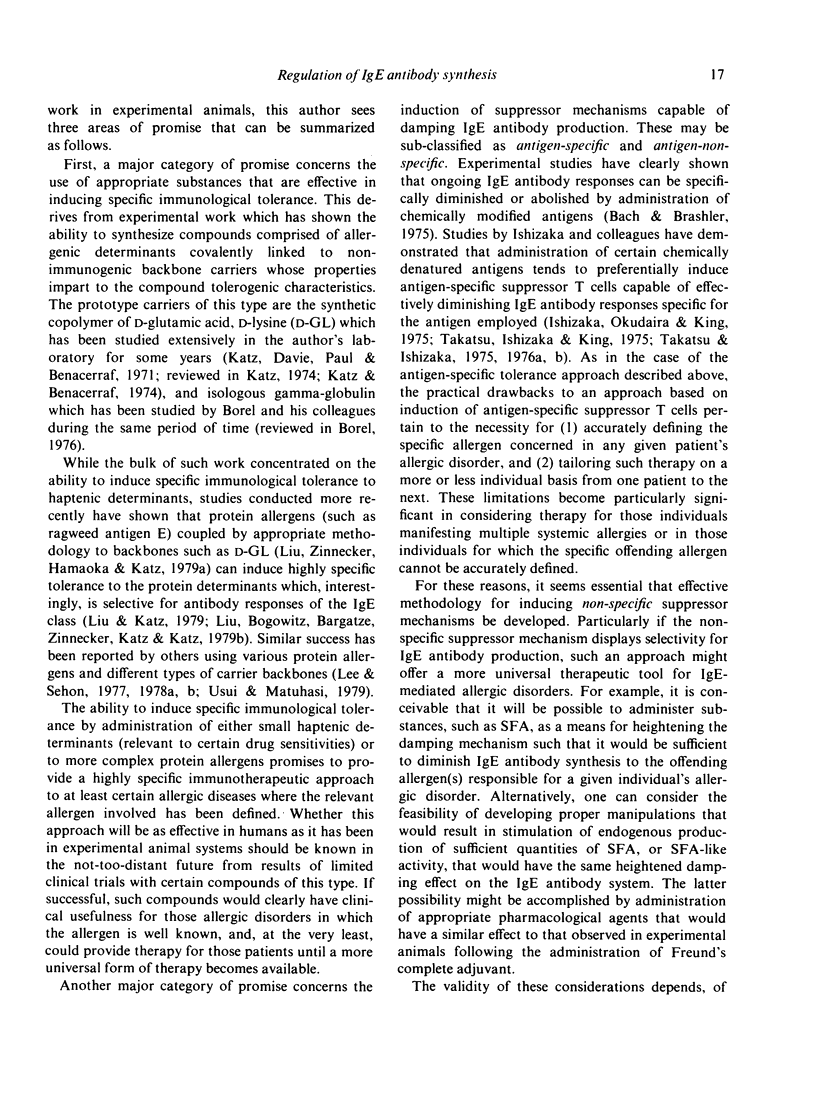
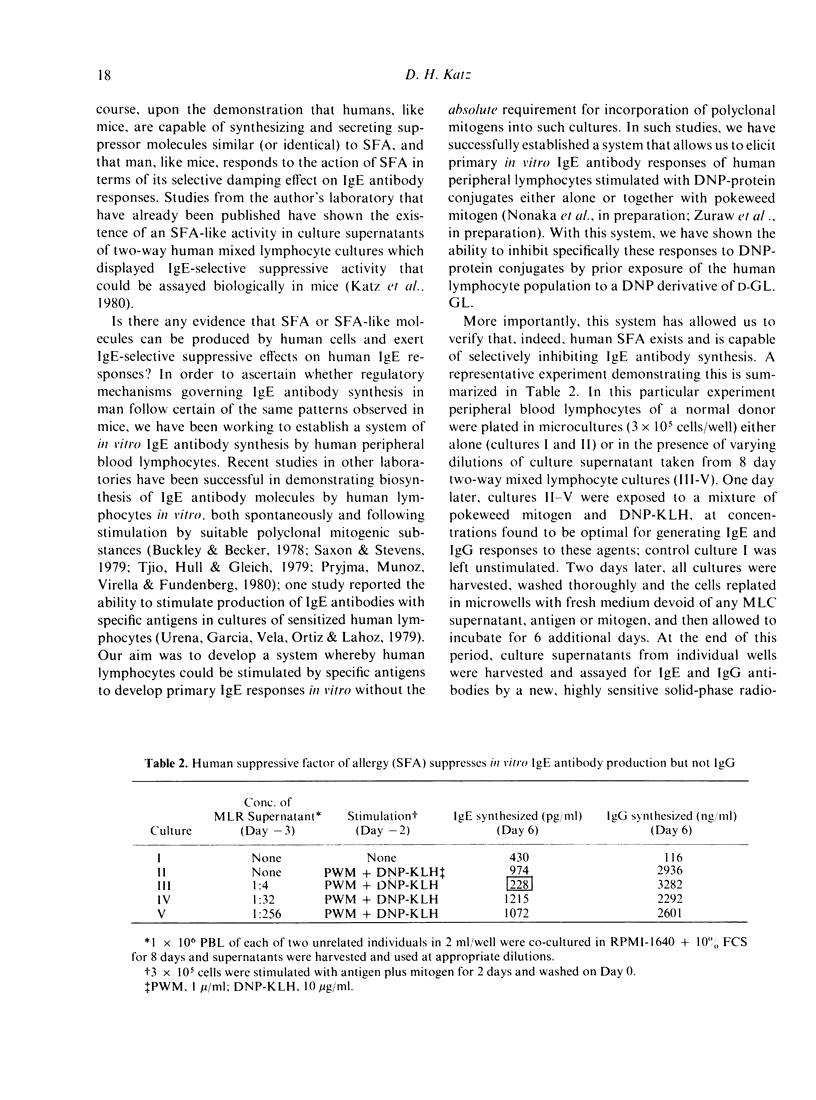
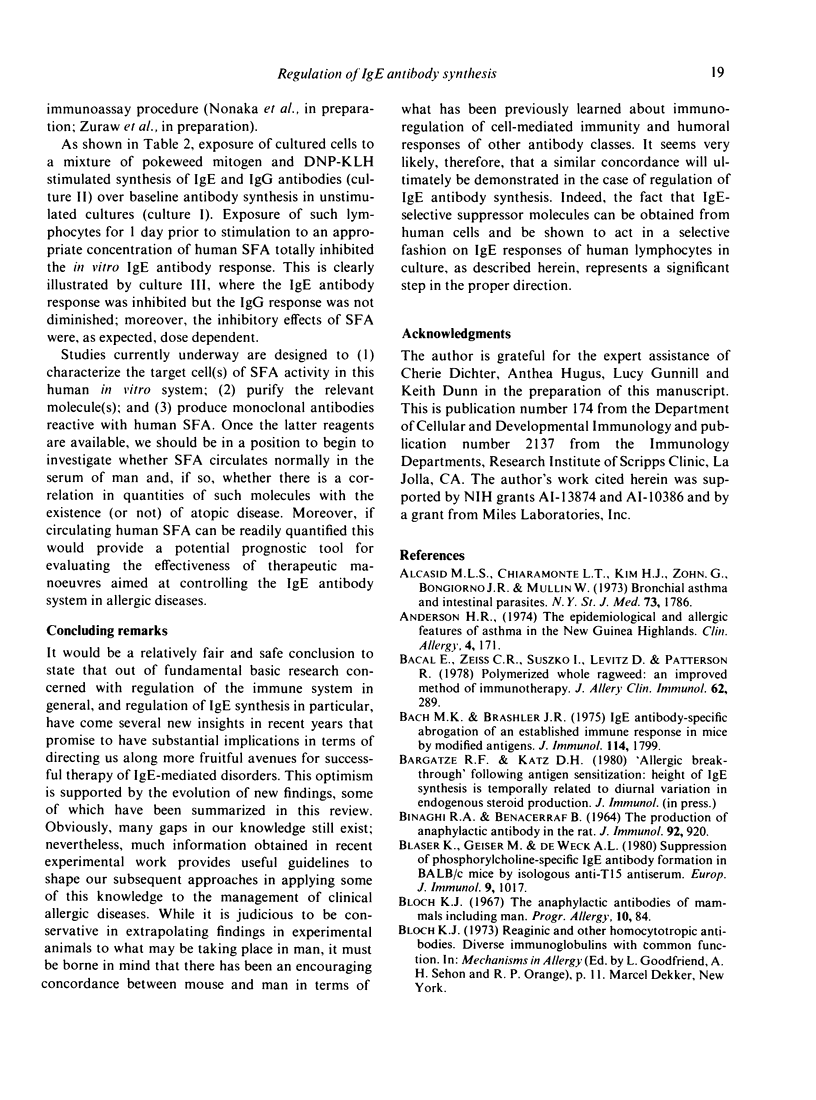
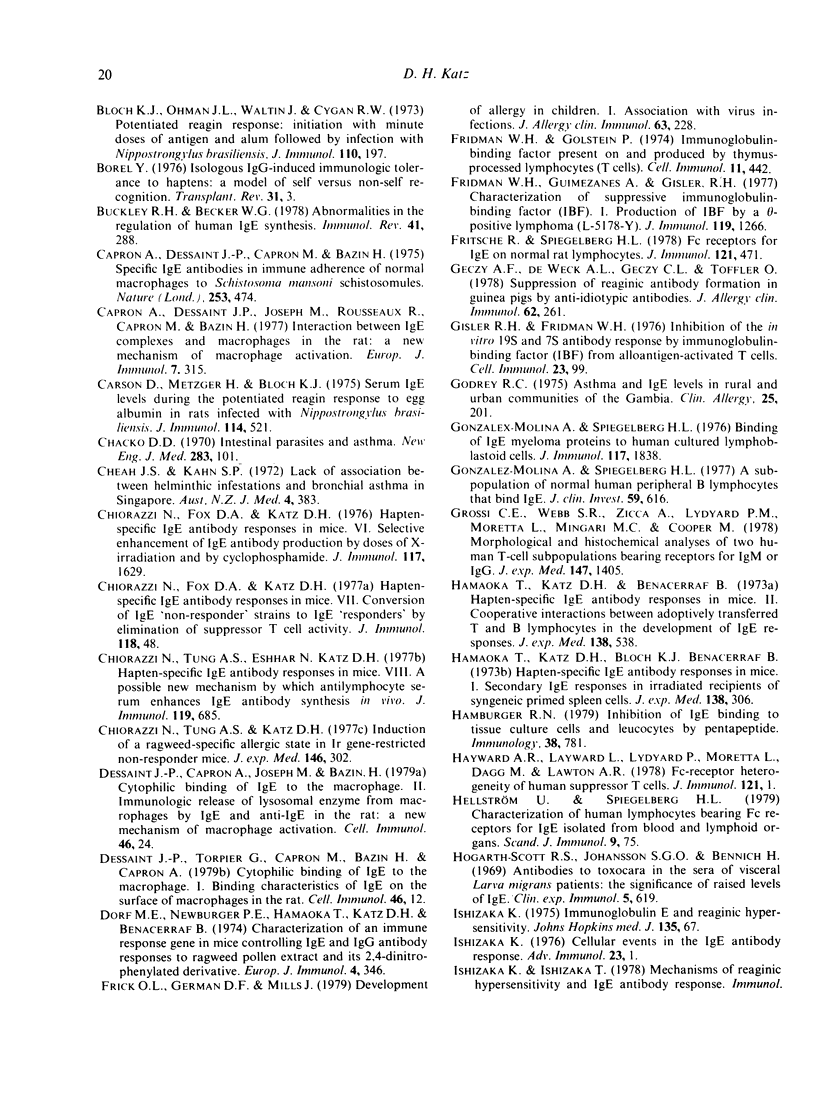
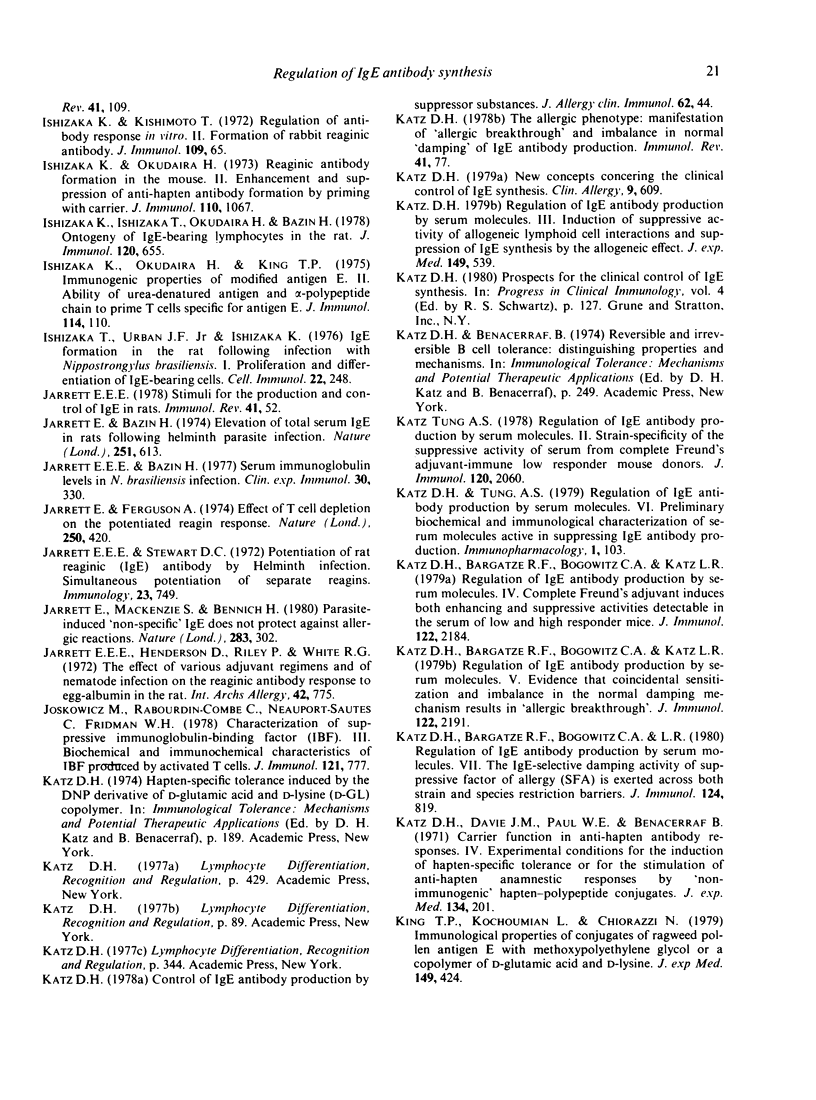
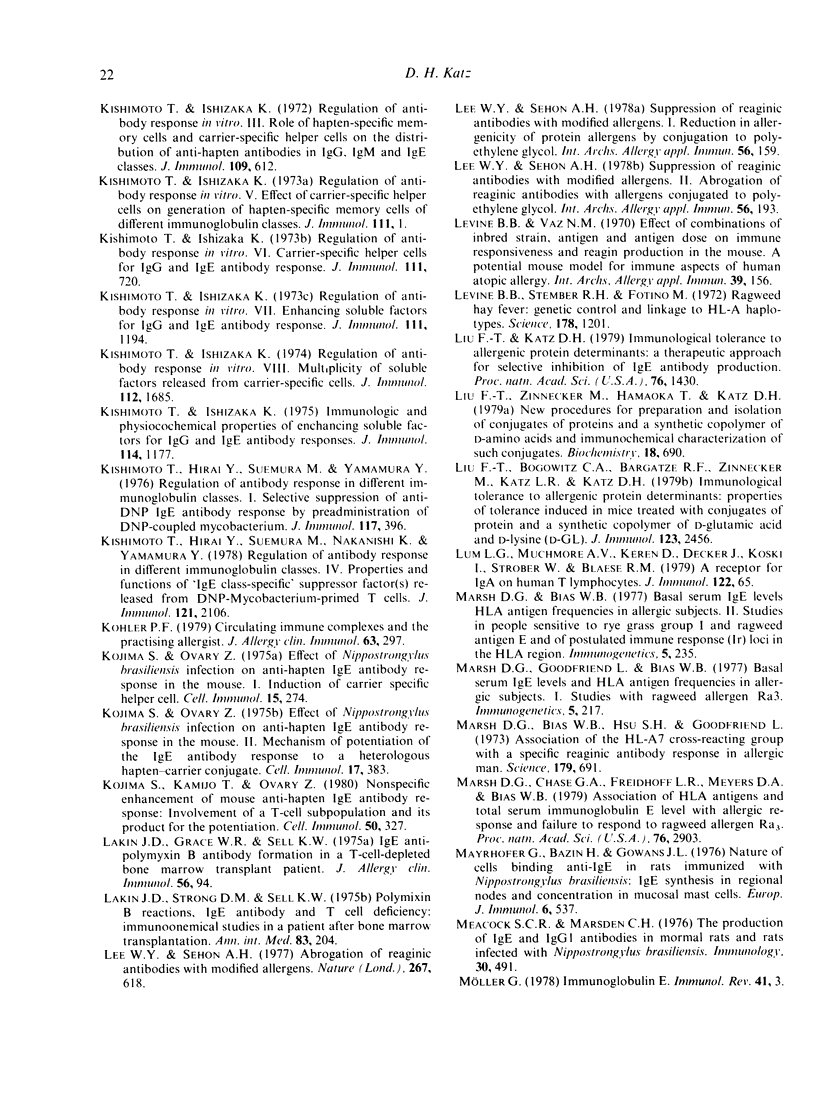
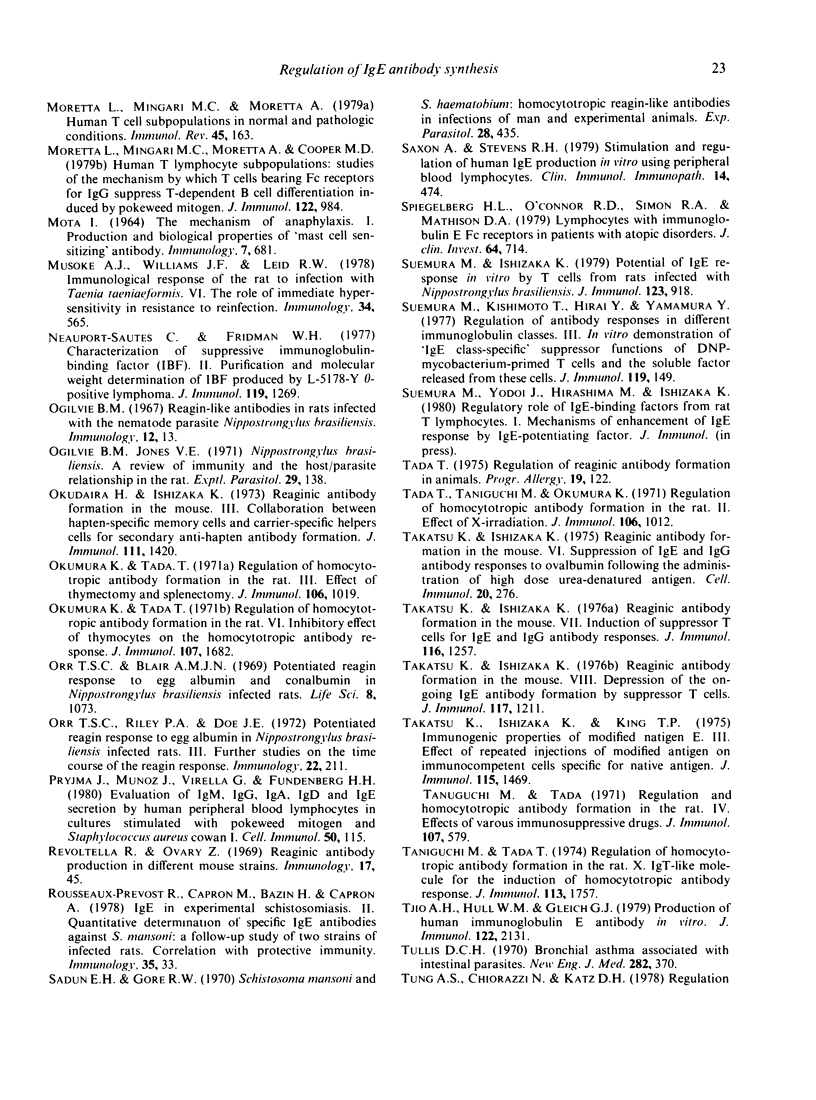
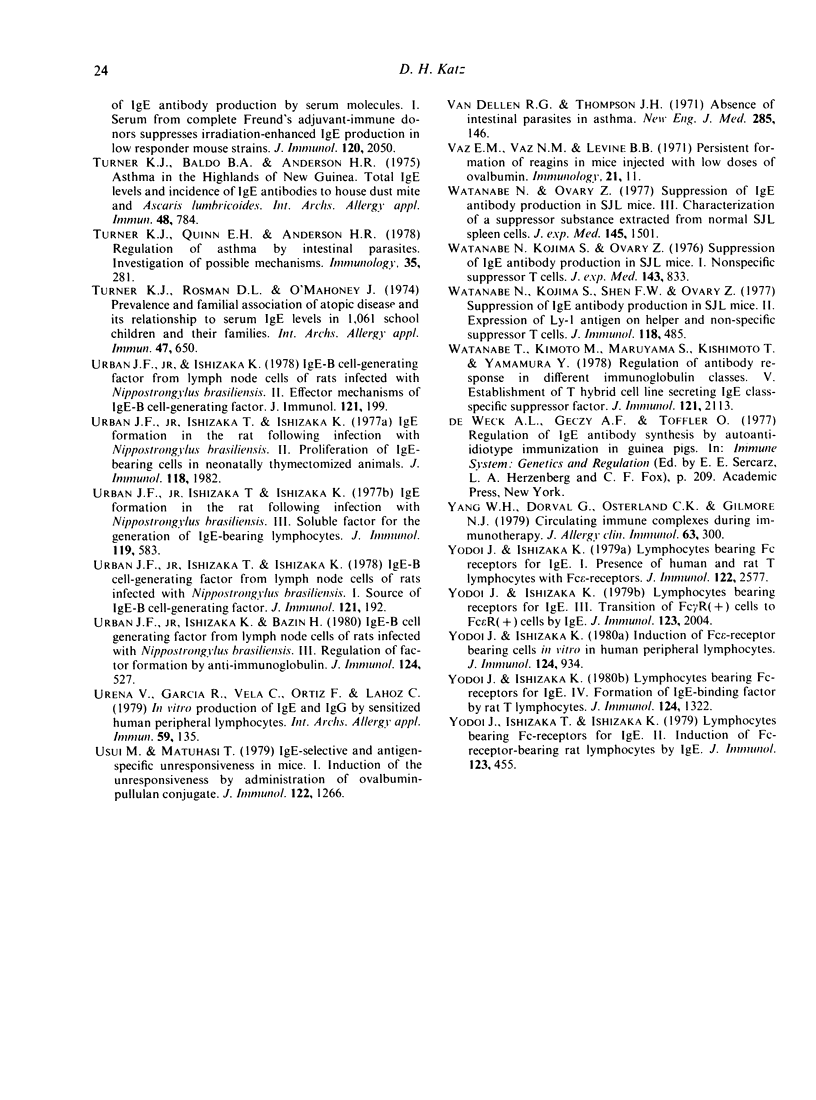
Selected References
These references are in PubMed. This may not be the complete list of references from this article.
- Alcasid M. L., Chiaramonte L. T., Kim H. J., Zohn B., Bongiorno J. R., Mullin W. Bronchial asthma and intestinal parasites. N Y State J Med. 1973 Jul 1;73(13):1786–1788. [PubMed] [Google Scholar]
- Anderson H. R. The epidemiological and allergic features of asthma in the New Guinea Highlands. Clin Allergy. 1974 Jun;4(2):171–183. doi: 10.1111/j.1365-2222.1974.tb01374.x. [DOI] [PubMed] [Google Scholar]
- BINAGHI R. A., BENACERRAF B. THE PRODUCTION OF ANAPHYLACTIC ANTIBODY IN THE RAT. J Immunol. 1964 Jun;92:920–926. [PubMed] [Google Scholar]
- Bach M. K., Brashler J. R. IgE antibody-specific abrogation of an established immune response in mice by modified antigens. J Immunol. 1975 Jun;114(6):1799–1807. [PubMed] [Google Scholar]
- Blaser K., Geiser M., de Weck A. L. Suppression of phosphorylcholine-specific IgE antibody formation in BALB/c mice by isologous anti-T 15 antiserum. Eur J Immunol. 1979 Dec;9(12):1017–1020. doi: 10.1002/eji.1830091218. [DOI] [PubMed] [Google Scholar]
- Bloch K. J., Ohman J. L., Jr, Waltin J., Cygan R. W. Potentiated reagin response: initiation with minute doses of antigen and alum followed by infection with Nippostrongylus brasiliensis. J Immunol. 1973 Jan;110(1):197–204. [PubMed] [Google Scholar]
- Borel Y. Isologous IgG-induced immunologic tolerance to haptens: a model of self versus non-self recognition. Transplant Rev. 1976;31:3–22. doi: 10.1111/j.1600-065x.1976.tb01450.x. [DOI] [PubMed] [Google Scholar]
- Buckley R. H., Becker W. G. Abnormalities in the regulation of human IgE synthesis. Immunol Rev. 1978;41:288–314. doi: 10.1111/j.1600-065x.1978.tb01469.x. [DOI] [PubMed] [Google Scholar]
- Capron A., Dessaint J. P., Capron M., Bazin H. Specific IgE antibodies in immune adherence of normal macrophages to Schistosoma mansoni schistosomules. Nature. 1975 Feb 6;253(5491):474–475. doi: 10.1038/253474a0. [DOI] [PubMed] [Google Scholar]
- Capron A., Dessaint J. P., Joseph M., Rousseaux R., Capron M., Bazin H. Interaction between IgE complexes and macrophages in the rat: a new mechanism of macrophage activation. Eur J Immunol. 1977 May;7(5):315–322. doi: 10.1002/eji.1830070515. [DOI] [PubMed] [Google Scholar]
- Carson D., Metzger H., Bloch K. J. Serum IgE levels during the potentiated reagin response to egg albumin in rats infected with Nippostrongylus brasiliensis. J Immunol. 1975 Jan;114(1 Pt 2):521–523. [PubMed] [Google Scholar]
- Chacko D. D. Intestinal parasites and asthma. N Engl J Med. 1970 Jul 9;283(2):101–101. doi: 10.1056/nejm197007092830218. [DOI] [PubMed] [Google Scholar]
- Chiorazzi N., Fox D. A., Katz D. H. Hapten-specific IgE antibody responses in mice. VI. Selective enhancement of IgE antibody production by low doses of X-irradiation and by cyclophosphamide. J Immunol. 1976 Nov;117(5 Pt 1):1629–1637. [PubMed] [Google Scholar]
- Chiorazzi N., Fox D. A., Katz D. H. Hapten-specific IgE antibody responses in mice. VII. Conversion of IgE "non-responder" strains to IgE "responders" by elimination of suppressor T cell activity. J Immunol. 1977 Jan;118(1):48–54. [PubMed] [Google Scholar]
- Chiorazzi N., Tung A. S., Eshhar N., Katz D. H. Hapten-specific IgE antibody responses in mice. VIII. A possible new mechanism by which anti-lymphocyte serum enhances IgE antibody synthesis in vivo. J Immunol. 1977 Aug;119(2):685–693. [PubMed] [Google Scholar]
- Chiorazzi N., Tung A. S., Katz D. H. Induction of a ragweed-specific allergic state in Ir-gene-restricted nonresponder mice. J Exp Med. 1977 Jul 1;146(1):302–307. doi: 10.1084/jem.146.1.302. [DOI] [PMC free article] [PubMed] [Google Scholar]
- Dessaint J. P., Capron A., Joseph M., Bazin H. Cytophilic binding of IgE to the macrophage. II. Immunologic release of lysosomal enzyme from macrophages by IgE and anti-IgE in the rat: a new mechanism of macrophage activation. Cell Immunol. 1979 Aug;46(1):24–34. doi: 10.1016/0008-8749(79)90242-9. [DOI] [PubMed] [Google Scholar]
- Dessaint J. P., Torpier G., Capron M., Bazin H., Capron A. Cytophilic binding of IgE to the macrophage. I. Binding characteristics of IgE on the surface of macrophages in the rat. Cell Immunol. 1979 Aug;46(1):12–23. doi: 10.1016/0008-8749(79)90241-7. [DOI] [PubMed] [Google Scholar]
- Dorf M. E., Newburger P. E., Hamaoka T., Katz D. H., Benacerraf B. Characterization of an immune response gene in mice controlling IgE and IgM antibody responses to ragweed pollen extract and its 2,4-dinitrophenylated derivative. Eur J Immunol. 1974 May;4(5):346–349. doi: 10.1002/eji.1830040507. [DOI] [PubMed] [Google Scholar]
- Frick O. L., German D. F., Mills J. Development of allergy in children. I. Association with virus infections. J Allergy Clin Immunol. 1979 Apr;63(4):228–241. doi: 10.1016/0091-6749(79)90106-4. [DOI] [PMC free article] [PubMed] [Google Scholar]
- Fridman W. H., Golstein P. Immunoglobulin-binding factor present on and produced by thymus-processed lymphocytes (T cells). Cell Immunol. 1974 Mar 30;11(1-3):442–455. doi: 10.1016/0008-8749(74)90042-2. [DOI] [PubMed] [Google Scholar]
- Fridman W. H., Guimezanes A., Gisler R. H. Characterization of suppressive immunoglobulin-binding factor (IBF). I. Production of IBF by a theta-positive lymphoma (L-5178-Y). J Immunol. 1977 Oct;119(4):1266–1268. [PubMed] [Google Scholar]
- Fritsche R., Spiegelberg H. L. Fc receptors for IgE on normal rat lymphocytes. J Immunol. 1978 Aug;121(2):471–478. [PubMed] [Google Scholar]
- Geczy A. F., de Weck A. L., Geczy C. L., Toffler O. Suppression of reaginic antibody formation in guinea pigs by anti-idiotypic antibodies. J Allergy Clin Immunol. 1978 Nov;62(5):261–270. doi: 10.1016/0091-6749(78)90156-2. [DOI] [PubMed] [Google Scholar]
- Gisler R. H., Fridman W. H. Inhibition of the in vitro 19S and 7S antibody response by immunoglobulin-binding factor (IBF) from alloantigen-activated T cells. Cell Immunol. 1976 Apr;23(1):99–107. doi: 10.1016/0008-8749(76)90174-x. [DOI] [PubMed] [Google Scholar]
- Gonzalez-Molina A., Spiegelberg H. L. A subpopulation of normal human peripheral B lymphcytes that bind IgE. J Clin Invest. 1977 Apr;59(4):616–624. doi: 10.1172/JCI108679. [DOI] [PMC free article] [PubMed] [Google Scholar]
- Gonzalez-Molina A., Spiegelberg H. L. Binding of IgE myeloma proteins to human cultured lymphoblastoid cells. J Immunol. 1976 Nov;117(5 PT2):1838–1845. [PubMed] [Google Scholar]
- Grossi C. E., Webb S. R., Zicca A., Lydyard P. M., Moretta L., Mingari M. C., Cooper M. D. Morphological and histochemical analyses of two human T-cell subpopulations bearing receptors for IgM or IgG. J Exp Med. 1978 May 1;147(5):1405–1417. doi: 10.1084/jem.147.5.1405. [DOI] [PMC free article] [PubMed] [Google Scholar]
- Hamaoka T., Katz D. H., Benacerraf B. Hapten-specific IgE antibody responses in mice. II. Cooperative interactions between adoptively transferred T and B lymphocytes in the development of IgE response. J Exp Med. 1973 Sep 1;138(3):538–556. doi: 10.1084/jem.138.3.538. [DOI] [PMC free article] [PubMed] [Google Scholar]
- Hamaoka T., Katz D. H., Bloch K. J., Benacerraf B. Hapten-specific IgE antibody responses in mice. I. Secondary IgE responses in irradiated recipients of syngeneic primed spleen cells. J Exp Med. 1973 Jul 1;138(1):306–311. doi: 10.1084/jem.138.1.306. [DOI] [PMC free article] [PubMed] [Google Scholar]
- Hayward A. R., Layward L., Lydyard P. M., Moretta L., Dagg M., Lawton A. R. Fc-receptor heterogeneity of human suppressor T cells. J Immunol. 1978 Jul;121(1):1–5. [PubMed] [Google Scholar]
- Hellström U., Spiegelberg H. L. Characterization of human lymphocytes bearing Fc receptors for IgE isolated from blood and lymphoid organs. Scand J Immunol. 1979;9(1):75–86. doi: 10.1111/j.1365-3083.1979.tb02709.x. [DOI] [PubMed] [Google Scholar]
- Hogarth-Scott R. S., Johansson S. G., Bennich H. Antibodies to Toxocara in the sera of visceral larva migrans patients: the significance of raised levels of IgE. Clin Exp Immunol. 1969 Dec;5(6):619–625. [PMC free article] [PubMed] [Google Scholar]
- Ishizaka K. Cellular events in the IgE antibody response. Adv Immunol. 1976;23:1–75. doi: 10.1016/s0065-2776(08)60318-1. [DOI] [PubMed] [Google Scholar]
- Ishizaka K. Dean's lecture. Immunoglobulin E and reaginic hypersensitivity. Johns Hopkins Med J. 1974 Aug;135(2):67–90. [PubMed] [Google Scholar]
- Ishizaka K., Ishizaka T., Okudaira H., Bazin H. Ontogeny of IgE-bearing lymphocytes in the rat. J Immunol. 1978 Feb;120(2):655–660. [PubMed] [Google Scholar]
- Ishizaka K., Kishimoto T. Regulation of antibody response in vitro. II. Formation of rabbit reaginic antibody. J Immunol. 1972 Jul;109(1):65–73. [PubMed] [Google Scholar]
- Ishizaka K., Okudaira H., King T. P. Immunogenic properties of modified antigen E. II. Ability of urea-denatured antigen and alpha-polypeptide chain to prime T cells specific for antigen E. J Immunol. 1975 Jan;114(1 Pt 1):110–115. [PubMed] [Google Scholar]
- Ishizaka T., Urban J. F., Jr, Ishizaka K. IgE formation in the rat following infection with Nippostrongylus brasiliensis. I. Proliferation and differentiation of IgE-bearing cells. Cell Immunol. 1976 Mar 15;22(2):248–261. doi: 10.1016/0008-8749(76)90027-7. [DOI] [PubMed] [Google Scholar]
- Jarrett E. E., Bazin H. Serum immunoglobulin levels in N. brasiliensis infection. Clin Exp Immunol. 1977 Nov;30(2):330–332. [PMC free article] [PubMed] [Google Scholar]
- Jarrett E. E., Henderson D., Riley P., White R. G. The effect of various adjuvant regimens and of nematode infection on the reaginic antibody response to egg-albumin in the rat. Int Arch Allergy Appl Immunol. 1972;42(6):775–781. doi: 10.1159/000230657. [DOI] [PubMed] [Google Scholar]
- Jarrett E. E., Stewart D. C. Potentiation of rat reaginic (IgE) antibody by helminth infection. Simultaneous potentiation of separate reagins. Immunology. 1972 Nov;23(5):749–755. [PMC free article] [PubMed] [Google Scholar]
- Jarrett E. E. Stimuli for the production and control of IgE in rats. Immunol Rev. 1978;41:52–76. doi: 10.1111/j.1600-065x.1978.tb01460.x. [DOI] [PubMed] [Google Scholar]
- Jarrett E., Bazin H. Elevation of total serum IgE in rats following helminth parasite infection. Nature. 1974 Oct 18;251(5476):613–614. doi: 10.1038/251613a0. [DOI] [PubMed] [Google Scholar]
- Jarrett E., Ferguson A. Effect of T cell depletion on the potentiated reagin response. Nature. 1974 Aug 2;250(465):420–422. doi: 10.1038/250420a0. [DOI] [PubMed] [Google Scholar]
- Jarrett E., Mackenzie S., Bennich H. Parasite-induced 'nonspecific' IgE does not protect against allergic reactions. Nature. 1980 Jan 17;283(5744):302–304. doi: 10.1038/283302a0. [DOI] [PubMed] [Google Scholar]
- Joskowicz M., Rabourdin-Combe C., Neauport-Sautes C., Fridman W. H. Characterization of suppressive immunoglobulin-binding factor (IBF). III. Biochemical and immunochemical characteristics of IBF produced by activated T cells. J Immunol. 1978 Aug;121(2):777–783. [PubMed] [Google Scholar]
- Katz D. H., Bargatze R. F., Bogowitz C. A., Katz L. R. Regulation of IgE antibody production by serum molecules. IV. Complete Freund's adjuvant induces both enhancing and suppressive activities detectable in the serum of low and high responder mice. J Immunol. 1979 Jun;122(6):2184–2190. [PubMed] [Google Scholar]
- Katz D. H., Bargatze R. F., Bogowitz C. A., Katz L. R. Regulation of IgE antibody production by serum molecules. V. Evidence that coincidental sensitization and imbalance in the normal damping mechanism results in "allergic breakthrough". J Immunol. 1979 Jun;122(6):2191–2197. [PubMed] [Google Scholar]
- Katz D. H., Bargatze R. F., Bogowitz C. A., Katz L. R. Regulation of IgE antibody production by serum molecules. VII. The IgE-selective damping activity of suppressive factor of allergy (SFA) is exerted across both strain and species restriction barriers. J Immunol. 1980 Feb;124(2):819–824. [PubMed] [Google Scholar]
- Katz D. H. Control of IgE antibody production by suppressor substances. J Allergy Clin Immunol. 1978 Jul;62(1):44–55. doi: 10.1016/0091-6749(78)90072-6. [DOI] [PubMed] [Google Scholar]
- Katz D. H. New concepts concerning the clinical control of IgE synthesis. Clin Allergy. 1979 Nov;9(6):609–624. doi: 10.1111/j.1365-2222.1979.tb00488.x. [DOI] [PubMed] [Google Scholar]
- Katz D. H. Prospects for the clinical control of IgE synthesis. Prog Clin Immunol. 1980;4:127–150. [PubMed] [Google Scholar]
- Katz D. H. Regulation of IgE antibody production by serum molecules. III. Induction of suppressive activity by allogeneic lymphoid cell interactions and suppression of IgE synthesis by the allogeneic effect. J Exp Med. 1979 Feb 1;149(2):539–544. doi: 10.1084/jem.149.2.539. [DOI] [PMC free article] [PubMed] [Google Scholar]
- Katz D. H., Tung A. S. Regulation of IgE antibody production by serum molecules. II. Strain-specificity of the suppressive activity of serum from complete freund's adjuvant-immune low responder mouse donors. J Immunol. 1978 Jun;120(6):2060–2067. [PubMed] [Google Scholar]
- Katz D. H., Tung A. S. Regulation of IgE antibody production by serum molecules. VI: Preliminary biochemical and immunological characterization of serum molecules active in suppressing IgE antibody production. Immunopharmacology. 1979 Mar;1(2):103–114. doi: 10.1016/0162-3109(79)90047-x. [DOI] [PubMed] [Google Scholar]
- King T. P., Kochoumian L., Chiorazzi N. Immunological properties of conjugates of ragweed pollen antigen E with methoxypolyethylene glycol or a copolymer of D-glutamic acid and D-lysine. J Exp Med. 1979 Feb 1;149(2):424–435. doi: 10.1084/jem.149.2.424. [DOI] [PMC free article] [PubMed] [Google Scholar]
- Kishimoto T., Hirai Y., Suemura M., Nakanishi K., Yamamura Y. Regulation of antibody response in different immunoglobulin classes. IV. Properties and functions of IgE class-specific" suppressor factor(s) released from DNP-mycobacterium-primed T cells. J Immunol. 1978 Nov;121(5):2106–2112. [PubMed] [Google Scholar]
- Kishimoto T., Hirai Y., Suemura M., Yamamura Y. Regulation of antibody response in different immunoglobulin classes. I. Selective suppression of anti-DNP IgE antibody response by preadministration of DNP-coupled mycobacterium. J Immunol. 1976 Aug;117(2):396–404. [PubMed] [Google Scholar]
- Kishimoto T., Ishizaka K. Regulation of antibody response in vitro. 3. Role of hapten-specific memory cells and carrier-specific helper cells on the distribution of anti-hapten antibodies in IgG, IgM and IgE classes. J Immunol. 1972 Sep;109(3):612–622. [PubMed] [Google Scholar]
- Kishimoto T., Ishizaka K. Regulation of antibody response in vitro. 8. Multiplicity of soluble factors released from carrier-specific cells. J Immunol. 1974 May;112(5):1685–1697. [PubMed] [Google Scholar]
- Kishimoto T., Ishizaka K. Regulation of antibody response in vitro. VI. Carrier-specific helper cells for IgG and IgE antibody response. J Immunol. 1973 Sep;111(3):720–732. [PubMed] [Google Scholar]
- Kishmoto T., Ishizaka K. Immunologic and physicochemical properties of enhancing soluble factors for IgG and IgE antibody responses. J Immunol. 1975 Apr;114(4):1177–1184. [PubMed] [Google Scholar]
- Kohler P. F. Circulating immune complexes and the practicing allergist. J Allergy Clin Immunol. 1979 May;63(5):297–299. doi: 10.1016/0091-6749(79)90122-2. [DOI] [PubMed] [Google Scholar]
- Kojima S., Kamijo T., Ovary Z. Nonspecific enhancement of mouse antihapten IgE antibody response: involvement of a T-cell subpopulation and its product for the potentiation. Cell Immunol. 1980 Mar 15;50(2):327–339. doi: 10.1016/0008-8749(80)90287-7. [DOI] [PubMed] [Google Scholar]
- Kojima S., Ovary Z. Effect of Nippostrongylus brasiliensis infection on anti-hapten IgE antibody response in the mouse. I. Induction of carrier specific helper cells. Cell Immunol. 1975 Feb;15(2):274–286. doi: 10.1016/0008-8749(75)90006-4. [DOI] [PubMed] [Google Scholar]
- Kojima S., Ovary Z. Effect of Nippostrongylus brasiliensis infection on anti-hapten IgE antibody response in the mouse. II. Mechanism of potentiation of the IgE antibody response to a heterologous hapten-carrier conjugate. Cell Immunol. 1975 Jun;17(2):383–391. doi: 10.1016/s0008-8749(75)80042-6. [DOI] [PubMed] [Google Scholar]
- Lakin J. D., Grace W. R., Sell K. W. IgE antipolymyxin B antibody formation in a T cell-depleted bone marrow transplant patient. J Allergy Clin Immunol. 1975 Aug;56(2):94–103. doi: 10.1016/0091-6749(75)90113-x. [DOI] [PubMed] [Google Scholar]
- Lakin J. D., Strong D. M., Sell K. W. Polymyxin B reactions, IgE antibody, and T-cell deficiency. Immunochemical studies in a patient after bone marrow transplantation. Ann Intern Med. 1975 Aug;83(2):204–207. doi: 10.7326/0003-4819-83-2-204. [DOI] [PubMed] [Google Scholar]
- Lee W. Y., Sehon A. H. Abrogation of reaginic antibodies with modified allergens. Nature. 1977 Jun 16;267(5612):618–619. doi: 10.1038/267618a0. [DOI] [PubMed] [Google Scholar]
- Levine B. B., Stember R. H., Fotino M. Ragweed hay fever: genetic control and linkage to HL-A haplotypes. Science. 1972 Dec 15;178(4066):1201–1203. doi: 10.1126/science.178.4066.1201. [DOI] [PubMed] [Google Scholar]
- Levine B. B., Vaz N. M. Effect of combinations of inbred strain, antigen, and antigen dose on immune responsiveness and reagin production in the mouse. A potential mouse model for immune aspects of human atopic allergy. Int Arch Allergy Appl Immunol. 1970;39(2-3):156–171. doi: 10.1159/000230343. [DOI] [PubMed] [Google Scholar]
- Liu F. T., Bogowitz C. A., Bargatze R. F., Zinnecker M., Katz L. R., Katz D. H. Immunologic tolerance to allergenic protein determinants: properties of tolerance induced in mice treated with conjugates of protein and a synthetic copolymer of D-glutamic acid and D-lysine (D-GL). J Immunol. 1979 Dec;123(6):2456–2465. [PubMed] [Google Scholar]
- Liu F. T., Katz D. H. Immunological tolerance to allergenic protein determinants: a therapeutic approach for selective inhibition of IgE antibody production. Proc Natl Acad Sci U S A. 1979 Mar;76(3):1430–1434. doi: 10.1073/pnas.76.3.1430. [DOI] [PMC free article] [PubMed] [Google Scholar]
- Liu F. T., Zinnecker M., Hamaoka T., Katz D. H. New procedures for preparation and isolation of conjugates of proteins and a synthetic copolymer of D-amino acids and immunochemical characterization of such conjugates. Biochemistry. 1979 Feb 20;18(4):690–693. doi: 10.1021/bi00571a022. [DOI] [PubMed] [Google Scholar]
- Lum L. G., Muchmore A. V., Keren D., Decker J., Koski I., Strober W., Blaese R. M. A receptor for IgA on human T lymphocytes. J Immunol. 1979 Jan;122(1):65–69. [PubMed] [Google Scholar]
- MOTA I. THE MECHANISM OF ANAPHYLAXIS. I. PRODUCTION AND BIOLOGICAL PROPERTIES OF 'MAST CELL SENSITIZING' ANTIBODY. Immunology. 1964 Nov;7:681–699. [PMC free article] [PubMed] [Google Scholar]
- Marsh D. G., Bias W. B., Hsu S. H., Goodfriend L. Association of the HL-A7 cross-reacting group with a specific reaginic antibody response in allergic man. Science. 1973 Feb 16;179(4074):691–693. doi: 10.1126/science.179.4074.691. [DOI] [PubMed] [Google Scholar]
- Marsh D. G., Chase G. A., Freidhoff L. R., Meyers D. A., Bias W. B. Association of HLA antigens and total serum immunoglobulin E level with allergic response and failure to respond to ragweed allergen Ra3. Proc Natl Acad Sci U S A. 1979 Jun;76(6):2903–2907. doi: 10.1073/pnas.76.6.2903. [DOI] [PMC free article] [PubMed] [Google Scholar]
- Mayrhofer G., Bazin H., Gowans J. L. Nature of cells binding anti-IgE in rats immunized with Nippostrongylus brasiliensis: IgE synthesis in regional nodes and concentration in mucosal mast cells. Eur J Immunol. 1976 Aug;6(8):537–545. doi: 10.1002/eji.1830060803. [DOI] [PubMed] [Google Scholar]
- Moretta L., Mingari M. C., Moretta A., Cooper M. D. Human T lymphocyte subpopulations: studies of the mechanism by which T cells bearing Fc receptors for IgG suppress T-dependent B cell differentiation induced by pokeweed mitogen. J Immunol. 1979 Mar;122(3):984–990. [PubMed] [Google Scholar]
- Moretta L., Mingari M. C., Moretta A. Hunan T cell subpopulations in normal and pathologic conditions. Immunol Rev. 1979;45:163–193. doi: 10.1111/j.1600-065x.1979.tb00277.x. [DOI] [PubMed] [Google Scholar]
- Musoke A. J., Williams J. F., Leid R. W. Immunological response of the rat to infection with Taenia taeniaeformis. VI. The role of immediate hypersensitivity in resistance to reinfection. Immunology. 1978 Mar;34(3):565–570. [PMC free article] [PubMed] [Google Scholar]
- Neauport-Sautes C., Fridman W. H. Characterization of suppressive immunoglobulin-binding factor (IBF). II. Purification and molecular weight determination of IBF produced by L-5178-Y theta-positive lymphoma. J Immunol. 1977 Oct;119(4):1269–1274. [PubMed] [Google Scholar]
- Ogilvie B. M., Jones V. E. Parasitological review. Nippostrongylus brasiliensis: a review of immunity and host-parasite relationship in the rat. Exp Parasitol. 1971 Feb;29(1):138–177. doi: 10.1016/0014-4894(71)90021-x. [DOI] [PubMed] [Google Scholar]
- Okudaira H., Ishizaka K. Reaginic antibody formation in the mouse. 3. Collaboration between hapten-specific memory cells and carrier-specific helper cells for secondary anti-hapten antibody formation. J Immunol. 1973 Nov;111(5):1420–1428. [PubMed] [Google Scholar]
- Okumura K., Tada T. Regulation of homocytotropic antibody formation in the rat. 3. Effect of thymectomy and splenectomy. J Immunol. 1971 Apr;106(4):1019–1025. [PubMed] [Google Scholar]
- Okumura K., Tada T. Regulation of homocytotropic antibody formation in the rat. VI. Inhibitory effect of thymocytes on the homocytotropic antibody response. J Immunol. 1971 Dec;107(6):1682–1689. [PubMed] [Google Scholar]
- Orr T. S., Blair A. M. Potentiated reagin response to egg albumin and conalbumin in Nippostrongylus brasiliensis infected rats. Life Sci. 1969 Oct 15;8(20):1073–1077. doi: 10.1016/0024-3205(69)90459-7. [DOI] [PubMed] [Google Scholar]
- Orr T. S., Riley P. A., Doe J. E. Potentiated reagin response to egg albumin in Nippostrongylus brasiliensis infected rats. 3. Further studies on the time course of the reagin response. Immunology. 1972 Feb;22(2):211–217. [PMC free article] [PubMed] [Google Scholar]
- Pryjma J., Muñoz J., Virella G., Fudenberg H. H. Evaluation of IgM, IgG, IgA, IgD, and IgE secretion by human peripheral blood lymphocytes in cultures stimulated with pokeweed mitogen and Staphylococcus aureus Cowan I. Cell Immunol. 1980 Mar 1;50(1):115–124. doi: 10.1016/0008-8749(80)90011-8. [DOI] [PubMed] [Google Scholar]
- Sadun E. H., Gore R. W. Schistosoma mansoni and S. haematobium: homocytotropic reagin-like antibodies in infections of man and experimental animals. Exp Parasitol. 1970 Dec;28(3):435–449. doi: 10.1016/0014-4894(70)90112-8. [DOI] [PubMed] [Google Scholar]
- Saxon A., Stevens R. H. Stimulation and regulation of human IgE production in vitro using peripheral blood lymphocytes. Clin Immunol Immunopathol. 1979 Dec;14(4):474–488. doi: 10.1016/0090-1229(79)90100-4. [DOI] [PubMed] [Google Scholar]
- Spiegelberg H. L., O'Connor R. D., Simon R. A., Mathison D. A. Lymphocytes with immunoglobulin E Fc receptors in patients with atopic disorders. J Clin Invest. 1979 Sep;64(3):714–720. doi: 10.1172/JCI109514. [DOI] [PMC free article] [PubMed] [Google Scholar]
- Suemura M., Ishizaka K. Potentiation of IgE response in vitro by T cells from rats infected with Nippostrongylus brasiliensis. J Immunol. 1979 Aug;123(2):918–924. [PubMed] [Google Scholar]
- Suemura M., Kishimoto T., Hirai Y., Yamamura Y. Regulation of antibody response in different immunoglobulin classes. III. In vitro demonstration of "IgE class-specific" suppressor functions of DNP-mycobacterium-primed T cells and the soluble factor released from these cells. J Immunol. 1977 Jul;119(1):149–155. [PubMed] [Google Scholar]
- Tada T. Regulation of reaginic antibody formation in animals. Prog Allergy. 1975;19:122–194. [PubMed] [Google Scholar]
- Tada T., Taniguchi M., Okumura K. Regulation of homocytotropic antibody formation in the rat. II. Effect of X-irradiation. J Immunol. 1971 Apr;106(4):1012–1018. [PubMed] [Google Scholar]
- Takatsu K., Ishizaka K., King T. P. Immunogenic properties of modified antigen E. III. Effect of repeated injections of modified antigen on immunocompetent cells specific for native antigen. J Immunol. 1975 Dec;115(6):1469–1476. [PubMed] [Google Scholar]
- Takatsu K., Ishizaka K. Reaginic antibody formation in the mouse. VI. Suppression of IgE and IgG antibody responses to ovalbumin following the administration of high dose urea-denatured antigen. Cell Immunol. 1975 Dec;20(2):276–289. doi: 10.1016/0008-8749(75)90105-7. [DOI] [PubMed] [Google Scholar]
- Takatsu K., Ishizaka K. Reaginic antibody formation in the mouse. VII. Depression of the ongoing IgE antibody formation by suppressor T cells. J Immunol. 1976 Oct;117(4):1211–1218. [PubMed] [Google Scholar]
- Takatsu K., Ishizaka K. Reaginic antibody formation in the mouse. VII. Induction of suppressor T cells for IgE and IgG antibody responses. J Immunol. 1976 May;116(5):1257–1264. [PubMed] [Google Scholar]
- Taniguchi M., Tada T. Regulation of homocytotropic antibody formation in the rat. IV. Effects of various immunosuppressive drugs. J Immunol. 1971 Aug;107(2):579–585. [PubMed] [Google Scholar]
- Taniguchi M., Tada T. Regulation of homocytotropic antibody formation in the rat. X. IgT-like molecule for the induction of homocytotropic antibody response. J Immunol. 1974 Dec;113(6):1757–1769. [PubMed] [Google Scholar]
- Tjio A. H., Hull W. M., Gleich G. J. Production of human immunoglobulin E antibody in vitro. J Immunol. 1979 May;122(5):2131–2133. [PubMed] [Google Scholar]
- Tullis D. C. Bronchial asthma associated with intestinal parasites. N Engl J Med. 1970 Feb 12;282(7):370–372. doi: 10.1056/NEJM197002122820706. [DOI] [PubMed] [Google Scholar]
- Tung A. S., Chiorazzi N., Katz D. H. Regulation of IgE antibody production by serum molecules. I. Serum from complete Freund's adjuvant-immune donors suppresses irradiation-enhanced IgE production in low responder mouse strains. J Immunol. 1978 Jun;120(6):2050–2059. [PubMed] [Google Scholar]
- Turner K. J., Baldo B. A., Anderson H. R. Asthma in the highlands of New Guinea Total IgE levels and incidence of IgE antibodies to house dust mite and Ascaris lumbricoides. Int Arch Allergy Appl Immunol. 1975;48(6):784–799. [PubMed] [Google Scholar]
- Turner K. J., Quinn E. H., Anderson H. R. Regulation of asthma by intestinal parasites. Investigation of possible mechanisms. Immunology. 1978 Aug;35(2):281–288. [PMC free article] [PubMed] [Google Scholar]
- Turner K. J., Rosman D. L., O'Mahony J. Prevalence and familial association of atopic disease and its relationship to serum IgE levels in 1,061 school children and their families. Int Arch Allergy Appl Immunol. 1974;47(5):650–664. doi: 10.1159/000231257. [DOI] [PubMed] [Google Scholar]
- Urban J. F., Jr, Ishizaka K., Bazin H. IgE-B cell generating factor from lymph node cells of rats infected with Nippostrongylus brasiliensis. III. Regulation of factor formation by anti-immunoglobulin. J Immunol. 1980 Feb;124(2):527–532. [PubMed] [Google Scholar]
- Urban J. F., Jr, Ishizaka K. IgE-B cell-generating factor from lymph node cells of rats infected with Nippostrongylus brasiliensis. II. Effector mechanisms of IgE-B cell-generating factor. J Immunol. 1978 Jul;121(1):199–203. [PubMed] [Google Scholar]
- Urban J. F., Jr, Ishizaka T., Ishizaka K. IgE formation in the rat after infection with Nippostrongylus brasiliensis. II. Proliferation of IgE-bearing cells in neonatally thymectomized animals. J Immunol. 1977 Jun;118(6):1982–1986. [PubMed] [Google Scholar]
- Urban J. F., Jr, Ishizaka T., Ishizaka K. IgE formation in the rat following infection with Nippostrongylus brasiliensis. III. Soluble factor for the generation of IgE-bearing lymphocytes. J Immunol. 1977 Aug;119(2):583–590. [PubMed] [Google Scholar]
- Urban J. F., Jr, Ishizaka T., Ishizaka K. IgE-B cell-generating factor from lymph node cells of rats infected with Nippostrongylus brasiliensis. I. Source of IgE-B cell-generating factor. J Immunol. 1978 Jul;121(1):192–198. [PubMed] [Google Scholar]
- Ureña V., Garcia R., Vela C., Ortiz F., Lahoz C. In vitro production of IgE and IgG by sensitized human peripheral lymphocytes. Int Arch Allergy Appl Immunol. 1979;59(2):135–142. doi: 10.1159/000232251. [DOI] [PubMed] [Google Scholar]
- Usui M., Matuhasi T. IgE-selective and antigen-specific unresponsiveness in mice. I. Induction of the unresponsiveness by administration of ovalbumin-pullulan conjugate. J Immunol. 1979 Apr;122(4):1266–1272. [PubMed] [Google Scholar]
- Van Dellen R. G., Thompson J. H., Jr Absence of intestinal parasites in asthma. N Engl J Med. 1971 Jul 15;285(3):146–148. doi: 10.1056/NEJM197107152850304. [DOI] [PubMed] [Google Scholar]
- Watanabe N., Kojima S., Ovary Z. Suppression of IgE antibody production in SJL mice. I. Nonspecific suppressor T cells. J Exp Med. 1976 Apr 1;143(4):833–845. doi: 10.1084/jem.143.4.833. [DOI] [PMC free article] [PubMed] [Google Scholar]
- Watanabe N., Kojima S., Shen F. W., Ovary Z. Suppression of IgE antibody production in SJL mice. II. Expression of Ly-1 antigen on helper and nonspecific suppressor T cells. J Immunol. 1977 Feb;118(2):485–488. [PubMed] [Google Scholar]
- Watanabe N., Ovary Z. Suppression of IgE antibody production in SJL mice. III. Characterization of a suppressor substance extracted from normal SJL spleen cells. J Exp Med. 1977 Jun 1;145(6):1501–1510. doi: 10.1084/jem.145.6.1501. [DOI] [PMC free article] [PubMed] [Google Scholar]
- Watanabe T., Kimoto M., Maruyama S., Kishimoto T., Yamamura Y. Regulation of antibody response in different immunoglobulin classes. V. Establishment of T hybrid cell line secreting IgE class-specific suppressor factor. J Immunol. 1978 Nov;121(5):2113–2117. [PubMed] [Google Scholar]
- Yang W. H., Dorval G., Osterland C. K., Gilmore N. J. Circulating immune complexes during immunotherapy. J Allergy Clin Immunol. 1979 May;63(5):300–307. doi: 10.1016/0091-6749(79)90123-4. [DOI] [PubMed] [Google Scholar]
- Yodoi J., Ishizaka K. Induction of Fc epsilon-receptor bearing cells in vitro in human peripheral lymphocytes. J Immunol. 1980 Feb;124(2):934–938. [PubMed] [Google Scholar]
- Yodoi J., Ishizaka K. Lymphocytes bearing Fc receptors for IgE. I. Presence of human and rat T lymphocytes with Fc epsilon receptors. J Immunol. 1979 Jun;122(6):2577–2583. [PubMed] [Google Scholar]
- Yodoi J., Ishizaka K. Lymphocytes bearing Fc receptors for IgE. IV. Formation of IgE-binding factor by rat T lymphocytes. J Immunol. 1980 Mar;124(3):1322–1329. [PubMed] [Google Scholar]
- Yodoi J., Ishizaka K. Lymphocytes bearing receptors for IgE. III. Transition of Fc gamma R(+) cells to Fc epsilon R(4) cells by IgE. J Immunol. 1979 Nov;123(5):2004–2010. [PubMed] [Google Scholar]
- Yodoi J., Ishizaka T., Ishizaka K. Lymphocytes bearing Fc receptors for IgE. II. Induction of Fcepsilon-receptor bearing rat lymphocytes by IgE. J Immunol. 1979 Jul;123(1):455–462. [PubMed] [Google Scholar]


